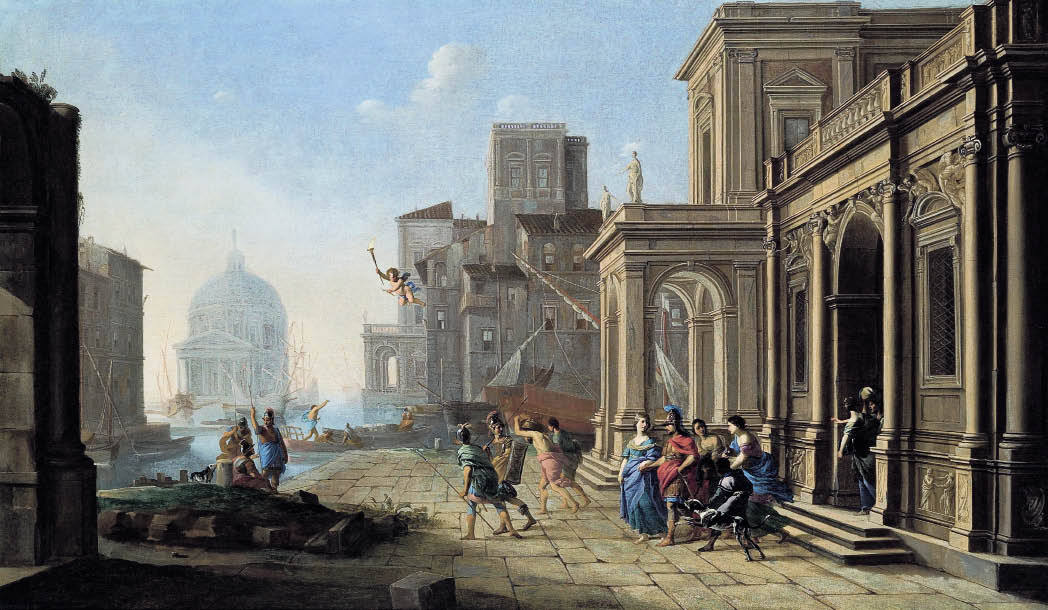Both the Greeks and the Jews were haunted by the image of a burning city. Indeed, there is a sense in which their radically differing attempts to exorcise it served to define their respective cultures. Among the Greeks, it was believed that everything most glorious about mortal achievement, and everything most terrible about mortal suffering, was to be found in the narrative of the siege and sack of Troy. Among the Jews, nothing did more to shape their understanding of the divine purpose than their anguished attempts to fathom why it was that their god had permitted Jerusalem to fall. Even today, millennia on, the aftershocks of these twin calamities continue to reverberate. The Iliad and the Bible: what would our own civilisation have been without their influence?
A question which only serves to emphasise how utter was the obliteration of the one other ancient city whose sack still serves to resonate in the modern imagination. The annihilation of Carthage by the Romans in 146 BC remains to this day a potent archetype of superpower vengefulness. Yet aside from a ghostly, off-stage presence in Virgil’s Aeneid, the episode generated no great literature, nor do we have any idea how the Carthaginians themselves might have interpreted their own tragedy. The libraries of Carthage, along with all the other buildings of the city, were systematically razed by the Romans, and their treasures — the odd agricultural manual excepted — either dispersed or destroyed. What is more, those few fragments of Punic narrative that we do have tend not to be tremendously inspiring. ‘And this mtnt,’ so one inscription read, ‘at the new moon ‘It. year of Esmunamos son of Adnibaal the i and Hanno son of Bodastart son of Hanno the rb.’ Homer it is not.
Are we doomed, then, to see Carthage exclusively through the eyes of her Greek and Roman enemies? It is as an attempt to answer this question that Richard Miles, a Cambridge classicist who regularly moonlights as a TV presenter, has written an epic and fascinating new history of the city. Sensitive to the inadequacies of our classical sources, he has performed a splendid feat of resurrectionism by filling some, at least, of the gaps with evidence drawn from his own specialist field of archaeology. So it is, for instance, that we are given a vivid portrait of the small Punic colony of Kerkouane, some 90 miles along the coast from Carthage, which sounds, from Miles’s description of it, rather like a home furnishings showroom: there were bathrooms everywhere, apparently, ‘with the most elaborate having a stepped seat, arm rests and a basin’. Nor, it turns out, was Carthage herself erased nearly so completely as tradition has always held: key aspects of the city’s history, from the notorious enthusiasm of her citizens for child sacrifice to her terrible end, have had invaluable light shed upon them by archaeology.
Miles’s most original contribution to a better understanding of Carthage, however, derives from an altogether shadowier field of study. Myth, like the spectre of Eurydice, always threatens to evade any attempt to lay hold of it, and Miles, by suggesting that it may offer clues as to how the Carthaginians themselves saw the world, knows perfectly well that he is dealing with shadows. Nevertheless, his thesis that Heracles, that robustly Hellenic hero, came to have a peculiar significance for the Carthaginians is a fascinating and persuasive one. As Miles reminds us, one of the strongman’s 12 labours saw him travel to the far West to steal a herd of magical cattle, and then return with them to Greece, slaughtering assorted bogeymen on the way. The appeal of this story to Hannibal, who made a heroic trek from Spain to Italy in an effort to destroy Rome, is obvious — even if it was elephants that he took with him over the Alps, rather than giant cows. The story of Hannibal, of course, is one that has been told many times before; but Miles’s Heraclean thesis enables him, at the very least, to give it a fresh spin.
As for a broader claim, that the appropriation by Carthage of Heracles bears witness to the city’s status as a vibrant powerhouse of ‘cultural diversity’, here, perhaps, Miles is less convincing. Indeed, what cannot help but strike the reader of his rich and compassionate book is how, despite all his best efforts, he struggles to make Carthaginian culture appear anything other than aetiolated and exploitative. There is little in all the wearisome record of Carthage’s wars in Sicily or Spain to suggest that the world would have been a better place had Hannibal succeeded in his aim, and defeated Rome. Brutal and oppressive in their own way the Romans certainly were; but it has to be doubted that the Carthaginians would ever have succeed in forging a ‘pax Punica’.






Comments